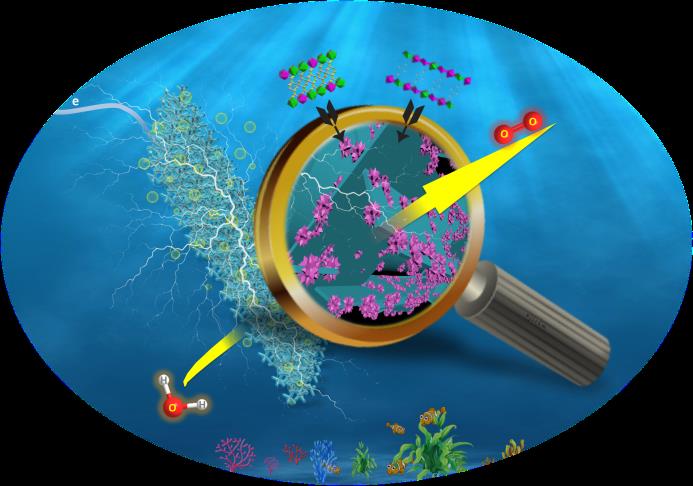
Metal-organic frameworks (MOFs), representing a new class of crystalline porous materials with the advantages of both homogeneous and heterogeneous catalysts, have aroused great interest in catalysis, especially for electrolytic oxygen evolution reaction (OER) which is the bottleneck of the highly efficient water splitting devices.
However, the poor conductivity, sluggish mass transport due to the microspores and low exposure of active metal centers severely limit the direct utilization of MOFs in electrochemical processes.
In a recent study published in Adv. Funct. Mater., the research group led by Prof. ZHU Qilong at Fujian Institute of Research on the Structure of Matter of Chinese Academy of Sciences reported a facile semi-sacrificial template way to fabricate a self-supporting MOF nanocomposite electrode (NiFe-NFF) for directly using as electrode in OER process.
In the fabrication process, NiFe alloy foam (NFF) was used as both metal source and substrate. In NiFe-NFF, ultrasmall Fe-rich Fe(Ni)-MOFs cluster-decorated ultrathin Ni-rich Ni(Fe)-MOFs nanosheets are tightly anchored on the substrate, which is beneficial to the enhancement of the electron conductivity and mass transport.
Researchers revealed that the thickness of the MOF nanosheets in NiFe-NFF is only 1.56 nm, much thinner than that using monometallic foam in the fabrication process, corresponding to the thinnest MOF nanosheets reported so far.
When directly used as working electrode in electrolytic OER process, NiFe-NFF was found to need low overpotentials of 227 and 253 mV only to achieve the current densities of 10 and 100 mA cm–2, respectively. It also showed excellent stability during long-time galvanostatic electrolysis.
The results of X-ray photoelectron spectroscopy (XPS) and M ssbauer spectrometer showed that the strong synergetic effect between Ni and Fe sites can tailor the electron density of active sites in NiFe-NFF, which may be helpful to its enhanced OER performance.
ssbauer spectrometer showed that the strong synergetic effect between Ni and Fe sites can tailor the electron density of active sites in NiFe-NFF, which may be helpful to its enhanced OER performance.
In addition, when coupled NiFe-NFF with a Pt mesh electrode in a two-electrodes overall water splitting device, it only needs 1.537 V to achieve a current density of 10 mA cm–2.
This study realized rational control of microscopic morphology and electronic structure of MOF nanosheets at molecular levels, which helps to understand the relationship between the structure and performance of electrocatalysts and the electrochemical application of MOFs materials.

Structure of the self-supporting MOF nanocomposite electrode and its utilization in electrolytic OER. (Image by Prof. ZHU’s Group)

86-10-68597521 (day)
86-10-68597289 (night)

86-10-68511095 (day)
86-10-68512458 (night)

cas_en@cas.cn

52 Sanlihe Rd., Xicheng District,
Beijing, China (100864)

